Abstract
A computer-assisted instruction program was evaluated that used a constant time-delay procedure to teach 5 students 18 spelling words. In addition to delivering the instructional procedure, the program managed the presentation of training content based on individual student responding and collected instructional data on individual student performance. The procedure was effective at teaching 4 of the 5 students the words, and generalization occurred from the computer-delivered keyboard response format to a teacher-delivered hand-written response format. Maintenance data varied among the students. The study demonstrated the feasibility of using microcomputers to deliver time-delay instruction in special education classrooms and suggested several research questions related to specific features of microcomputer-delivered time-delay instruction.
Full text
PDF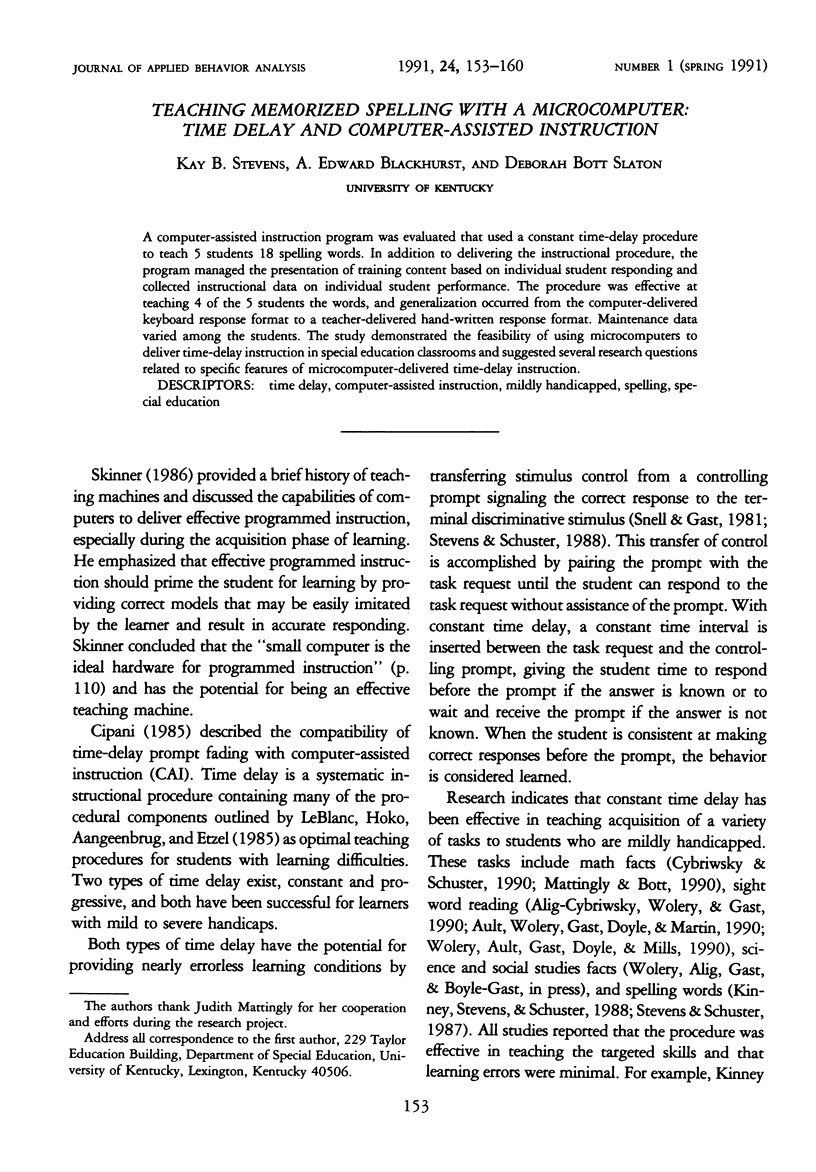
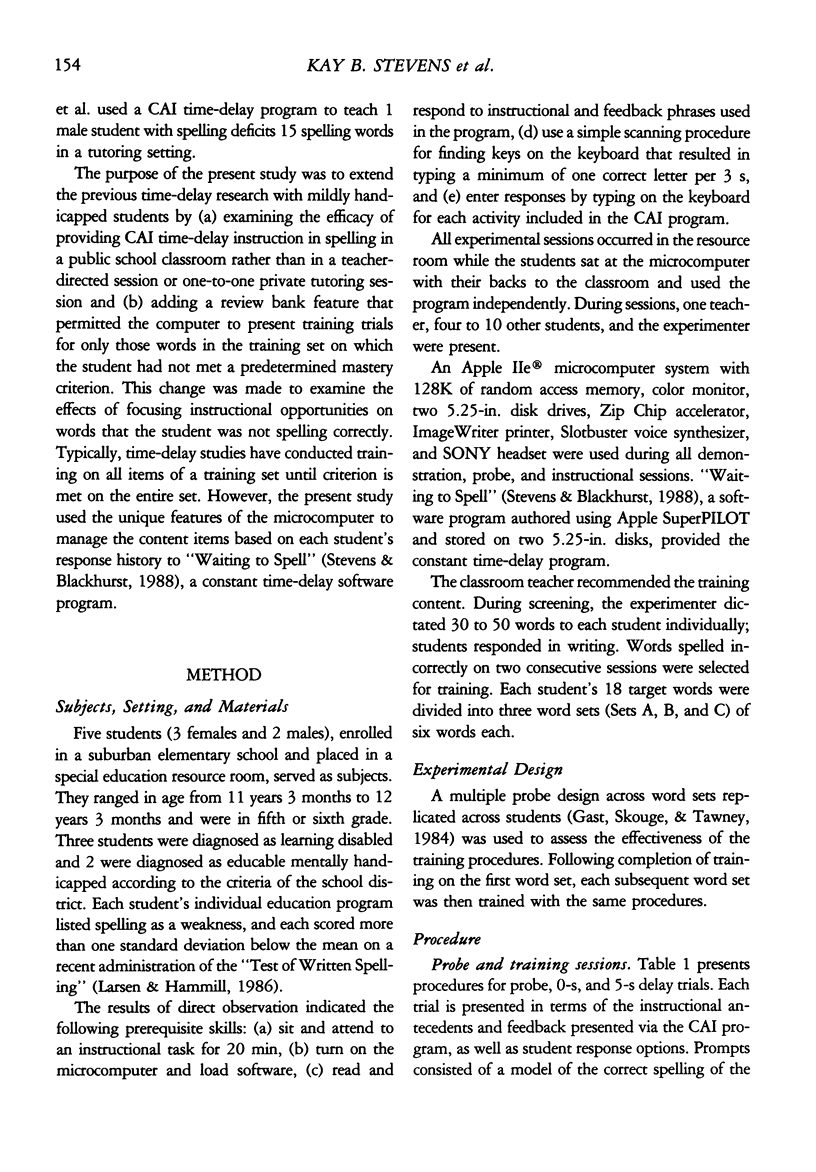

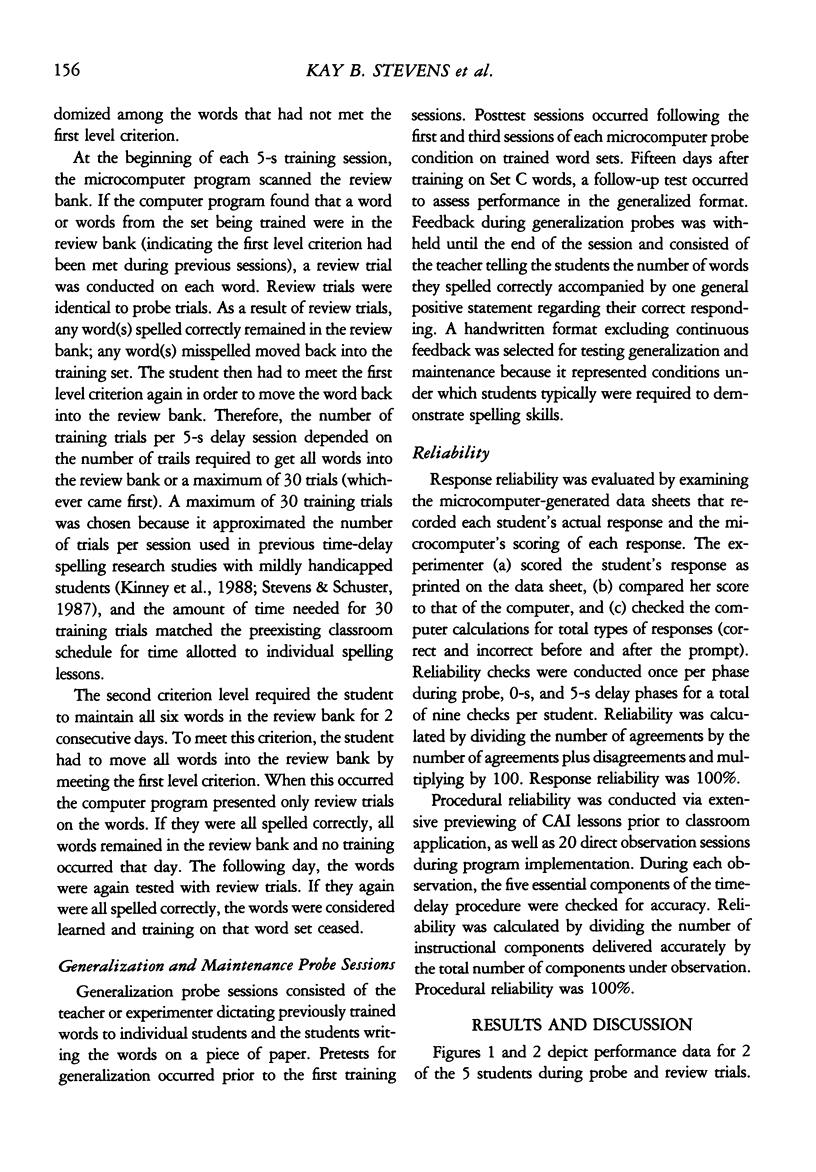
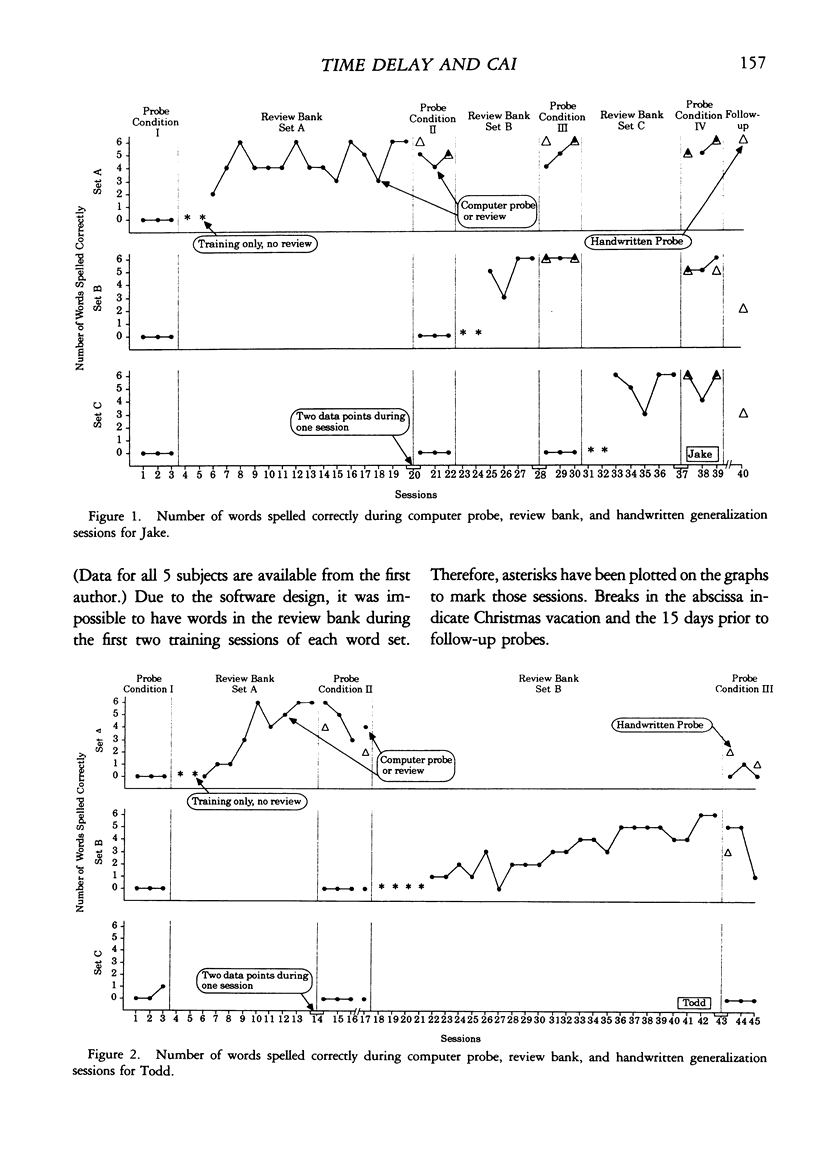
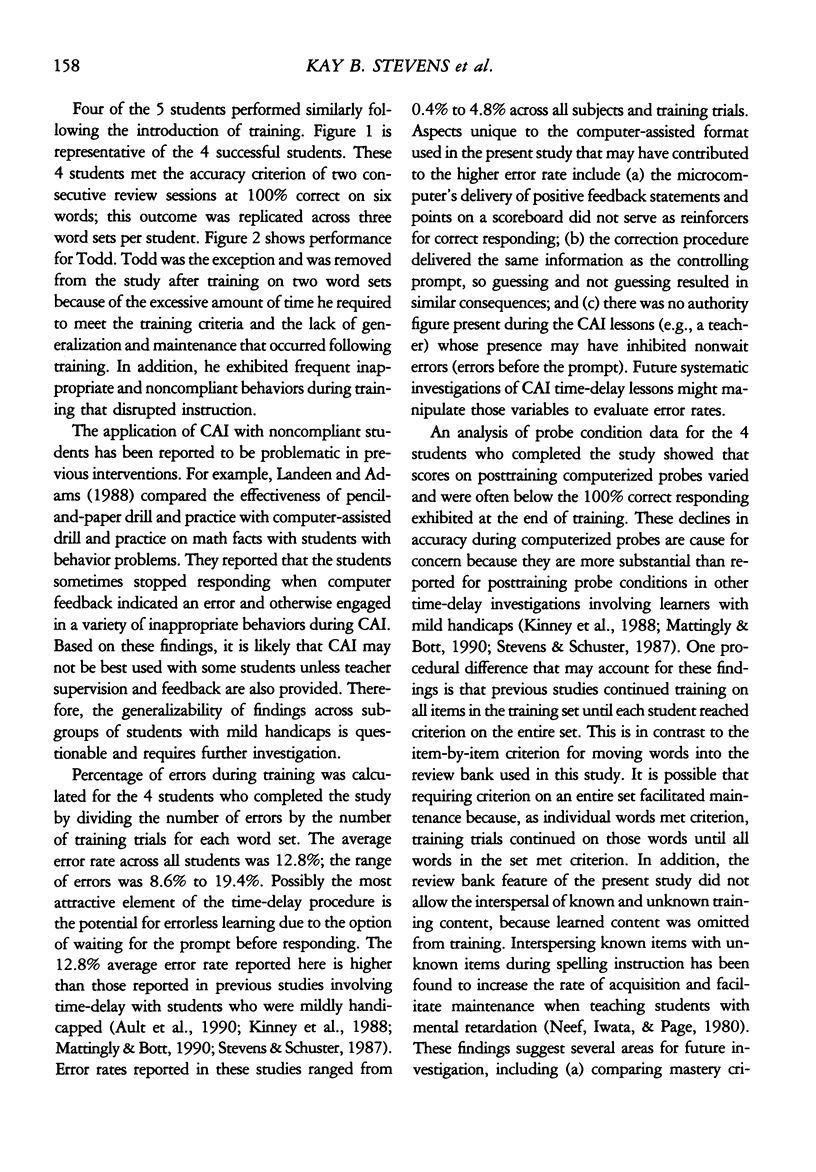

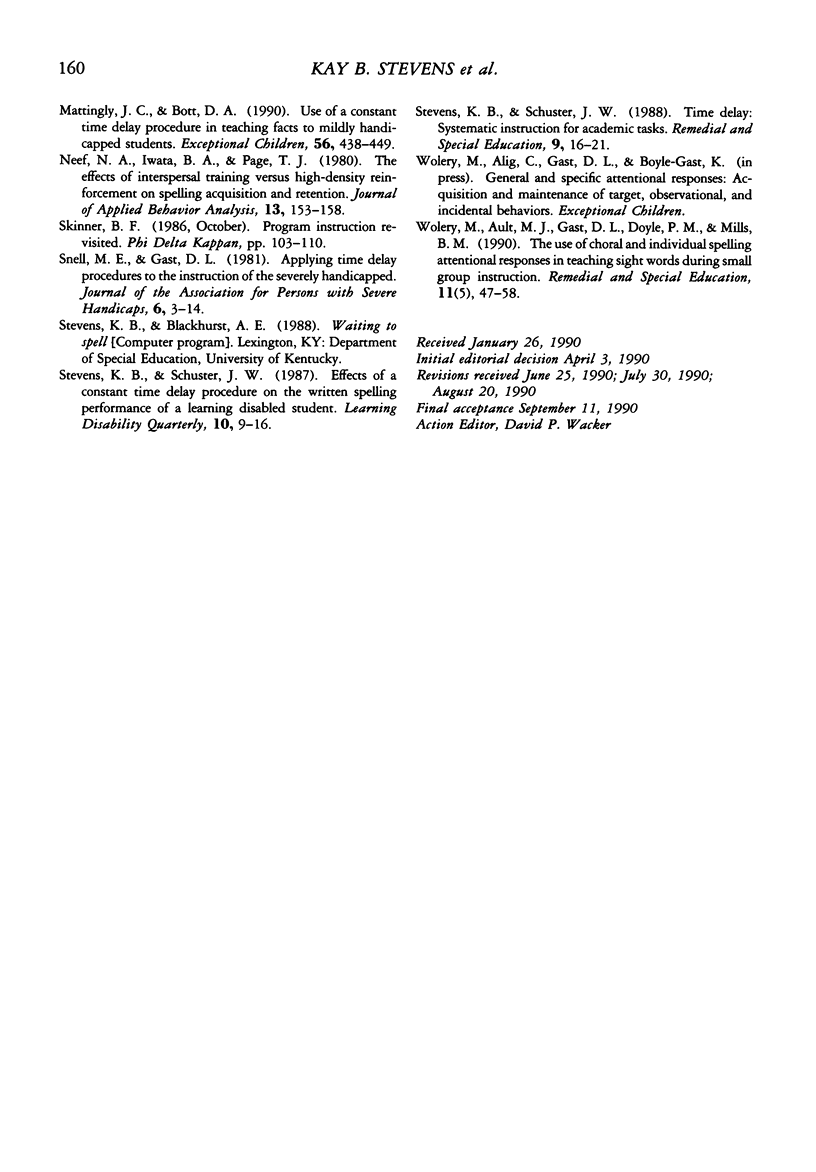
Selected References
These references are in PubMed. This may not be the complete list of references from this article.
- Mattingly J. C., Bott D. A. Teaching multiplication facts to students with learning problems. Except Child. 1990 Feb;56(5):438–449. doi: 10.1177/001440299005600507. [DOI] [PubMed] [Google Scholar]
- Neef N. A., Iwata B. A., Page T. J. The effects of interspersal training versus high-density reinforcement on spelling acquisition and retention. J Appl Behav Anal. 1980 Spring;13(1):153–158. doi: 10.1901/jaba.1980.13-153. [DOI] [PMC free article] [PubMed] [Google Scholar]


